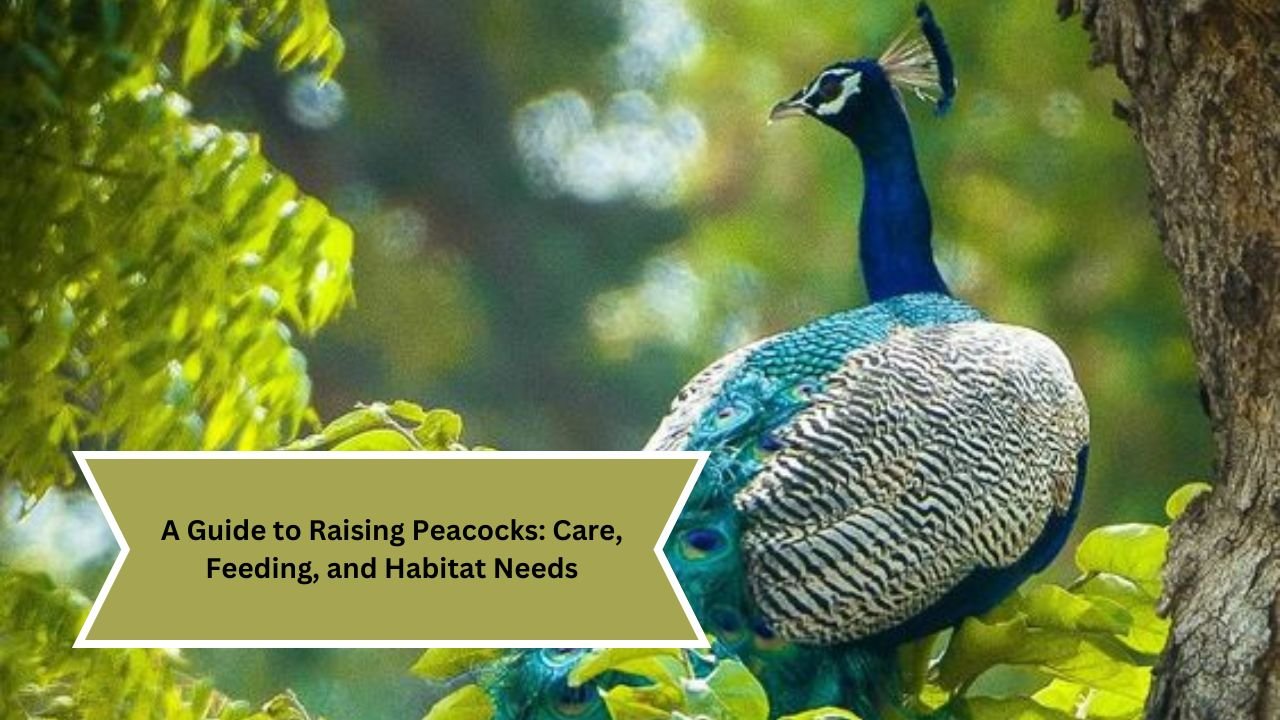Raising peacocks can be a rewarding endeavor, not only for their stunning beauty but also for their unique personalities. Known for their vibrant plumage and fascinating behaviors, peacocks (primarily the Indian peafowl) can be a great addition to your property, whether for ornamental purposes or as part of a farm setting. This guide will cover essential aspects of peacock care, feeding, and habitat needs to help you raise healthy and happy birds.
Understanding Peacocks
Peacocks are part of the pheasant family and are known for their extravagant tail feathers, which they display in a dazzling fan during courtship rituals. Male peafowl are called peacocks, while females are referred to as peahens, and their young are called peachicks. Peacocks are not only beautiful but also intelligent and curious creatures. Understanding their behavior and needs is vital for successful care.
Choosing the Right Breed
Before you begin raising peacocks, it’s essential to select the right breed. The Indian peafowl is the most common and well-known variety, distinguished by its iridescent blue and green plumage. Other breeds include:
- Green Peafowl: Native to Southeast Asia, these peafowl are slightly smaller and have a more subdued coloration than Indian peafowl.
- White Peafowl: These are leucistic birds, meaning they have reduced pigmentation, resulting in white feathers but still possess some of the beautiful patterns associated with peacocks.
Each breed has specific needs, so research their requirements and choose the one that best fits your environment and purpose.
Habitat Requirements
Creating an appropriate habitat for your peacocks is crucial for their well-being. Here are key considerations for setting up their living space:
1. Space
Peacocks require plenty of space to roam, forage, and display their beautiful feathers. Ideally, they should have access to a large, secure area. A minimum of 100 square feet per bird is recommended, with additional space for larger flocks. Providing ample space helps reduce stress and allows them to exhibit natural behaviors.
2. Shelter
While peacocks are hardy birds, they need protection from harsh weather conditions. A well-ventilated coop or barn is essential for shelter during extreme temperatures. The shelter should be:
- Weatherproof: Ensure the structure is insulated and protected from wind, rain, and extreme heat.
- Secure: The coop must be predator-proof to keep out raccoons, foxes, and other potential threats. Use sturdy fencing, ideally buried a few inches underground to prevent digging.
- Perch Space: Provide elevated perches for the peacocks to roost at night, as they prefer to sleep off the ground.
3. Enrichment
Peacocks are naturally curious and intelligent creatures, so enriching their environment is crucial. Include features such as:
- Trees and Shrubs: Provide natural cover and perching spots. Peacocks enjoy roosting in trees and bushes, which also helps them feel secure.
- Dust Bath Areas: Create designated dust bath spots with loose dirt or sand to help them keep their feathers clean and free from parasites.
- Foraging Opportunities: Scatter seeds or grains around the enclosure to encourage foraging behaviors.
Feeding Peacocks
Feeding peacocks requires a balanced diet to ensure their health and vibrancy. Here’s how to create a nutritious feeding regimen:
1. Commercial Diets
High-quality commercial poultry feed is an excellent base for your peacocks’ diet. Look for a feed formulated for game birds or peafowl that includes:
- Protein Sources: Peafowl require protein-rich diets. Look for feeds containing at least 18-20% protein for adults. Young peachicks require even higher protein levels (around 24%).
- Grains: Peacocks enjoy grains like corn, wheat, and barley. Mixing grains into their feed can provide additional nutrients.
2. Fresh Fruits and Vegetables
In addition to commercial feed, supplement their diet with fresh fruits and vegetables. Peacocks enjoy a variety of foods, including:
- Fruits: Apples, grapes, berries, and melons are favorites.
- Vegetables: Leafy greens, carrots, and cucumbers provide essential vitamins.
3. Protein Supplements
Occasionally, offer protein supplements to support their growth and plumage health. Good options include:
- Mealworms: These are an excellent source of protein and can be offered live or dried.
- Cooked Eggs: Scrambled or hard-boiled eggs can be a tasty treat.
4. Water
Fresh, clean water is vital for peacocks. Ensure they have access to water at all times. Consider using a shallow basin or a bird bath, as peafowl enjoy wading and splashing in water. Regularly change the water to keep it clean and free from contaminants.
Health Care and Management
Maintaining the health of your peacocks is crucial for their longevity. Here are some tips for effective management:
1. Regular Health Checks
Conduct routine health checks to monitor your birds for any signs of illness. Common indicators of health issues include:
- Changes in Appetite: A decrease in food intake could signal illness.
- Behavior Changes: Lethargy or unusual behaviors may indicate stress or disease.
- Physical Signs: Check for signs of injury, feather loss, or abnormal droppings.
2. Vaccinations and Vet Care
Consult with a veterinarian who specializes in avian care to establish a vaccination schedule. Vaccinations can help protect against common diseases like avian influenza and Newcastle disease. Regular check-ups can also catch any health issues early.
3. Parasite Control
Parasites can pose a significant threat to peacock health. Regularly monitor for signs of mites, ticks, and worms. Implement a deworming schedule and keep their habitat clean to minimize the risk of infestations.
Breeding Peacocks
If you choose to breed peacocks, it’s essential to understand their reproductive behaviors. Here are some key points:
1. Mating Season
Peacocks typically breed in the spring, with males performing elaborate displays to attract females. They fan their tail feathers and produce vocalizations to impress potential mates.
2. Nesting
Peahens generally nest on the ground, often in hidden areas. Provide safe, quiet spaces for them to lay eggs. A typical clutch consists of 3 to 6 eggs, which incubate for about 28 days.
3. Raising Peachicks
Once the eggs hatch, the peachicks are precocial, meaning they are relatively independent and can walk and feed themselves shortly after birth. Provide a safe and warm environment for the peachicks, along with appropriate feed to support their growth.
Conclusion
Raising peacocks can be an enjoyable and fulfilling experience, offering the opportunity to connect with these beautiful birds. By understanding their needs for habitat, diet, and health care, you can create a thriving environment for your peacocks. Whether you’re drawn to their striking appearance or their unique behaviors, with proper care and attention, peacocks can be a stunning addition to your home or farm. Embrace the challenge and joy of peacock husbandry, and you’ll be rewarded with their beauty and charm for years to come.
| HOME | CLICK HERE |
| PEACOCK | CLICK HERE |

